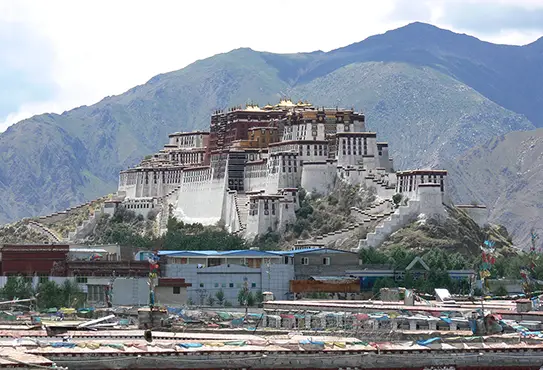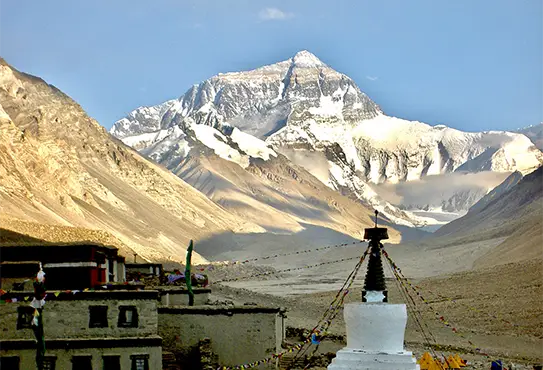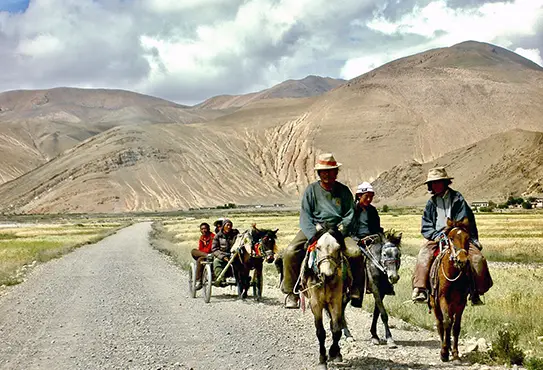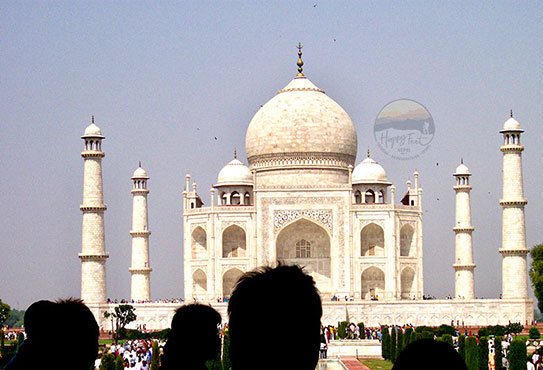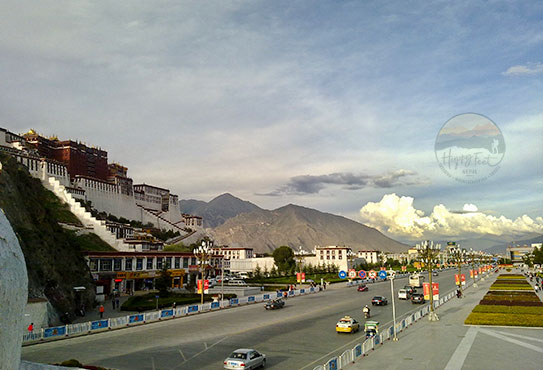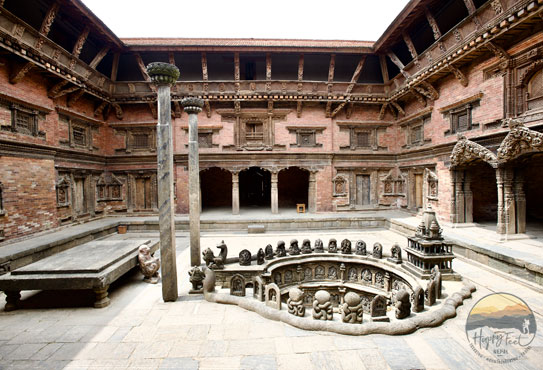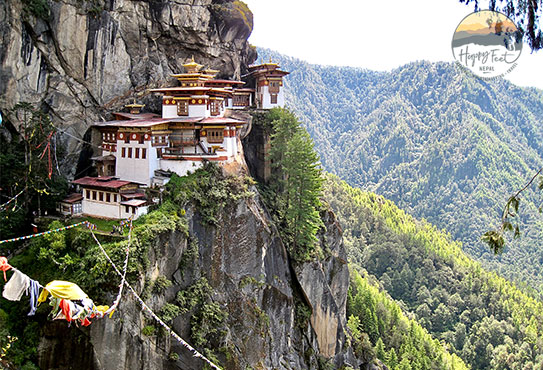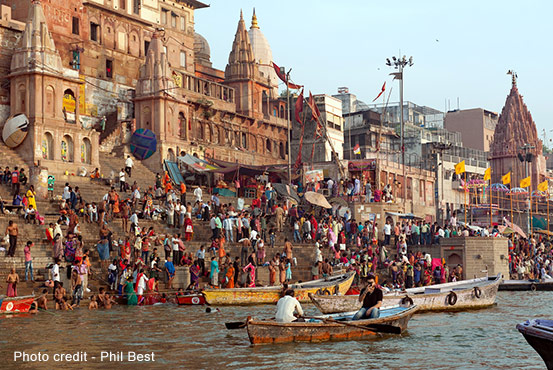-
Sunday - Friday: 9 AM - 4 PM
India and Nepal Tour, an incredible tour
India and Nepal Tour offers a beautiful tour combining the deserts of India and the Himalayas of Nepal, filled with incredible histories and age-old glories!
Trip highlights
Old Delhi, New Delhi, Jaipur, Taj Mahal, Varanasi, Swayambunath Stupa, Kathmandu Durbar Square, Pashupatinath temple, Boudhanath Stupa, medieval town of Bhaktapur, Patan Durbar Square and Panoramic Mountain flight over Mount Everest!
The India and Nepal Tour offers a beautiful journey that combines the deserts of India with the Himalayas of Nepal, filled with incredible history and age-old glories. On this brief trip itinerary, explore the fabled palaces and temples in Rajasthan’s desert, its mythical cities, and the legendary, history-filled Kathmandu Valley, featuring ancient Buddhist stupas and Hindu temples with a magnificent view of the Himalayas. In India, the visits include Old Delhi, New Delhi, Jaipur, Agra with Taj Mahal, Varanasi, on the shore of the mythical River of the Ganges, and in Kathmandu includes, Swayambunath Stupa, Kathmandu Durbar square with the living goddess, Pashupatinath temple, the holiest temple for Hindu World, Boudhanath Stupa, the Mecca of the Buddhist, Bhaktapur, the museum in the open air, and the Lalitpur, the city of Arts!
The India and Nepal Tour offers a 15-day beautiful experiential journey that combines the deserts of India with the Himalayas of Nepal, providing an unforgettable experience that blends history, culture, spirituality, and breathtaking landscapes. In this 15-day itinerary, you will discover the fabled palaces and temples of Rajasthan alongside the mythical cities and the legendary history-filled Kathmandu Valley, renowned for its ancient Buddhist stupas and Hindu temples, a treasure trove of history framed by magnificent views of the Himalayas.
After an overnight and exploring the wonders of Old and New Delhi, the capital cities of India, your journey sets off on a scenic drive to Mandawa, 242 kilometres away, in the vibrant Shekhawati region of Rajasthan. Known for its stunning frescoes and traditional paintings, Mandawa offers a picturesque glimpse into charming rural villages, desert resorts, and colourful markets. We encourage you to savour the local Rajasthani cultural cuisine, known for its rich flavours, unique spices and dining atmosphere. From Mandawa, move on to Khimsar (255 kilometres), renowned for its stunning fort constructed by the Ranas of Mewar, and explore the surrounding rural towns to gain insight into regional lifestyles and taste the local delicacies.
Next, we journey to Pushkar, famous for its sacred lake and the annual fair that draws thousands of pilgrims. You will visit the Brahmin temple at the lakeside, steeped in mythology. A scenic drive then takes us to Jaipur, the capital of Rajasthan, adorned with pink terracotta buildings that speak of its royal heritage. Your experiential journeys continue with visits to the majestic Amber Fort and the iconic City Palace.
Upon leaving Jaipur, we pause at Fatehpur Sikri, the once-thriving capital of Akbar, before arriving in Agra, home to the Taj Mahal. After a morning visit to this architectural marvel, you will discover Agra Fort, rich in Mughal history. Your journey into India culminates in Varanasi, where you can witness sacred rituals along the Ganges River and explore significant Buddhist landmarks, offering a truly spiritual experience.
Finally, the experiential journeys land in Kathmandu, where ancient traditions meet modern vitality. The capital city of Nepal, Kathmandu, with three medieval towns, each rich in history shaped by diverse dynasties, is an interesting site to experience. In Kathmandu, explore prominent sites such as Swayambhunath and Pashupatinath and marvel at the architectural wonders of its Durbar Squares, including those in Kathmandu, Patan, and Bhaktapur. We are just pleased to offer this incredible exploration of India and Nepal!
Arrive at Delhi Airport, complete customs and immigration formalities, and claim your baggage, which may take some time. Upon arrival, get a traditional welcome from the Happy Feet Mountaineers representative and transfer to the hotel (room check-in is available from noon). Meet the guide on a half-day visit to Old Delhi, including the Jama Masjid or Friday Mosque, the largest mosque in India and the Red Fort, built over ten years in the 17th century during the rule of the Mughal empire. Finalize the visits and drive to the hotel. Overnight at the Jaypee Siddharth, a 4-star hotel (Deluxe Room). NOTE: Red Fort remains closed on Mondays.
265km – 5h30. Breakfast included.
Breakfast at the hotel. Then, check out the hotel and drive to Mandawa, situated in the heart of the Shekhawati region of Rajasthan. Mandawa is known for its frescoes and paintings. Along the way, we will pass through typical Indian villages. Arrive in Mandawa and check into your rooms. In the afternoon take a walking tour, without a guide, of the colourful villages with a wide variety of shops where we can buy various things. Dinner and overnight at the Hotel Vivaana Culture – Heritage hotel.
255km – 5hrs. Breakfast included.
Breakfast at the hotel. Today, drive Khimsar, passing through the heart of Rajasthan. Khimsar is known for its magnificent Fort built by the Ranas of Mewar. Arrive at the hotel and get checked into the rooms. In the afternoon, explore the Fort and surrounding towns. In the evening, we will take a walking tour of the small village to observe the area’s rural lifestyle. Dinner and overnight stay at the Welcome hotel by ITC Fort Khimsar – Heritage hotel.
Note: Once you are at Khimsar, we encourage you to experience the rich culture of Khimsar’s dune village dinners, a unique dining experience set in the stunning desert surroundings of Khimsar. These dinners unfold in a village setting, where you can savour the authentic flavours of traditional Rajasthani cuisine and truly connect with the local culture. The allure of the dining setting, under the starry sky, around a crackling bonfire, with the dunes as a backdrop, creates a memorable and atmospheric experience. These dune village dinners are a celebration of hospitality, flavours, and scenic allure, offering visitors a taste of authentic rural life and a dining experience that is as enriching as it is unforgettable.
190km – 4hrs. Breakfast included.
Breakfast and drive to Pushkar, famous for its annual fair, which takes place each year from October to November. Thousands of devout Hindus and tourists gather to bathe in the sacred waters of Pushkar Lake. This religious festival is also an excellent occasion to enjoy the famous camel market. The Pushkar lake, according to myth, emerged from a lotus flower in the hand of Brahma. Arrive and visit the sacred Lake and the Temple of the Brahma at one end of the town. According to mythology, Brahma dropped a feather and had a temple built where it landed, and that place was Pushkar. Overnight at the Hotel Pushkar Palace – heritage.
145km – 3hrs. Breakfast included.
Early in the morning, walk to the top of the hill to enjoy a panoramic view of Pushkar and see the sunrise. Then, return to the hotel and have breakfast. Check out the formalities and depart for Jaipur by road, a three-hour drive. Arrival and distribution into rooms. Jaipur, the capital of Rajasthan, still seems cradled and well-protected. Jaipur is named after Maharaja Jai Singh, who became King of Amber in the early 1700s at the age of thirteen. Despite his precocious age, he was a distinguished student, adding to his credentials the careers of architecture and astronomy. He designed the new capital with exquisite pink terracotta buildings, which gave it the name “Pink City” due to the predominant colours of pink and orange; the sunset effect is magical. For the rest of the day, you are free to explore the city and visit the local market without a guide. Overnight at Hotel Alsisar Haveli – Heritage.
Breakfast at the hotel. Later, visit the Amber Fort, stunningly situated on a hillside overlooking a lake, 11km from Jaipur. Amber was the capital of Rajasthan for six centuries and the core land of Rajput history. Nowadays, the city is practically abandoned. The objective of the visit is to see and admire its imposing palace. The palace stands on the steep hill slope behind Maota Lake, retaining an air of great beauty. The visit to the palace can be made on foot, by Jeep, or by elephant-back safari, which is the most preferred option. The construction of the Palace/Fort was initiated in the 1592s by Raja Man Singh, the Rajput commander of Akbar’s army and later extended and completed by Jai Singh. The “Hall of Public Audience,” with a double row of columns and latticed galleries, is reached by an imposing stairway. The Fortress also contains a temple with doors made of Silver dedicated to Goddess Kali. Next, walk over to the Hall of Victory, noted for its inlaid panels and glittering mirror ceiling. The “Hall of Pleasure” is on the opposite side with an ivory-inlaid sandalwood door, and the “Hall of Private Audience” is extraordinary with exquisite murals. However, the highlight of the Fort is the “Hall of Mirrors”, whose interior is encrusted with tiny mirrors, sparkling like a diamond in candlelight. The oldest part of the palace is Raja Man Singh’s apartments, where each of his dozen wives had a separate suite.
Afternoon: Tour of Jaipur City. Jaipur city is a living testament to one of the most remarkable rulers of his age, Jai Singh II, a highly talented ruler in politics and warfare. However, the credit for the pinkness of the city goes to Maharaja Man Singh, who dressed up the city in the welcoming symbolic colour following the visit of the Prince of Wales and, later, Edward VII, who visited Jaipur in the 1876s.
The City Palace and Museum visit comprises several courtyards, gardens, and buildings that blend Rajasthani and Mughal architecture. The former Maharaja still resides in one of its wings, dating back to the 18th century, and features a blend of Rajput and Mughal styles. The museum contains an extensive collection of art, miniature paintings, carpets, costumes and dresses, enamelware, old weapons, and an armoury of guns and swords. The Jantar Mantar, a renowned astronomical observatory built in 1728 by Jai Singh, and Hawa Mahal, also known as the Palace of the Winds, constructed in the 1790s, are Jaipur’s most famous monuments of Rajput architecture. Hawa Mahal consists of 5 floors, of which only the multi-windowed façade remains.
NOTE: The Archaeology department has limited the number of trips and times to Amber Fort by elephant, so it is possible that Amber Fort may not be accessible on the day of the visit, and we will have to access it by Jeep instead. Therefore, an elephant-back tour cannot be guaranteed.
245km – 5h. Breakfast included.
Breakfast and drive to Agra, en route to visit Abhaner, originally called Abha Nagri, which means “The Shining City”. Abhaner has “Baoris” (stairwells), which are the invention of the natives to collect rainwater. You will also visit Fatehpur Sikri, known as the “ghost city”. The city’s history began when Akbar, desperate for not having an heir, decided to see a Muslim holy man, Salim Chisti, who blessed Akbar. Therefore, the emperor had a long-awaited son, whom he named Salim, in honour of the Muslim saint. Salim would one day take the throne from Jahangir. The grateful Akbar decided to move his capital to the small town where he died in 1569. Fatehpur Sikri stands on a rocky ridge for 2 miles. He raised his hand at the foot of the cliffs and created an artificial lake that extended 20 miles in all directions. Finalize the visit and continue by road to Agra, another 50 kilometres. Arrive and get distributed into the rooms at the Hotel Grand Mercure / Clarks Shiraz – 5 star.
This morning we take a sunrise visit to the main attraction of Agra: The Taj Mahal, one of the world’s most beautiful buildings. Called “A dream in marble,” the Taj Mahal was built by Shah Jah as a memorial to his queen Mumtaz Mahal. Shah Jah built the Taj to enshrine the body of his favourite wife, Mumtaz Mahal (the elect of the palace), who died shortly after the birth of their 14th child in 1631. The Taj Mahal – often described as the most extravagant monument ever built monument of love constructed by 20,000 men from Asia commenced in 1632 and was completed in 1653. The marble used for the memorial was sourced from Makrana, near Jodhpur, and precious stones, including amethyst, malachite, onyx, lapis lazuli, turquoise, jade, crystal, and mother-of-pearl, were imported from Persia, Russia, Afghanistan, Tibet, China, and the Indian Ocean. The Taj Mahal is located at the banks of the river Yamuna, reflecting her in the waters of Yamuna, and you can look at it from nearby Agra Fort.
The rest of the day visit Agra, including Red Fort, Itma-udollah tomb and Mehtab Bagh and Agra Nagri. The imposing Red Fort, or red sandstone Agra Fort, was principally erected as a military establishment by Akbar in 1565, when he was just 23, and was partially converted into a palace during Shah Jahan’s time. Within the Fort are several fascinating buildings, including the Octagonal Tower, the Jehangir Palace built by Akbar for his son Jehangir, and the Pearl Mosque made of marble. Then there is the Hall of Public Audience, best known for its Peacock Throne and white marble-built private palace known as the Khas Mahal. Agra is also famously known as the city of Marble; therefore, time permitting visit its marble factories. In the evening, explore the markets of Agra on foot and buy souvenirs for families.
Note: Taj Mahal closed on Fridays. The hotel rooms get booked for day use until the transfer to the train station.
Early in the morning, departure from Agra for Varanasi on train (Vande Bharat express 0600 /1300 hrs) – Evening enjoy aarti ceremony.
Arrive in Varanasi, assistance on arrival and transfer to the hotel, check in formalities and lunch. Varanasi, later the religious capital of Hindu India and a microcosm of Indian life, is the sacred place where the Buddha preached to his five disciples on the Four Noble Truths. Nobody knows the birth of time of Varanasi. When Buddha arrived in 500 B.C., he found an ancient settlement. In Varanasi the attraction are Mother India Temple, Durga Temple, Sankat Mochan Temple, Birla Temple, and Banaras Hindu University, among other notable attractions in this vibrant city.
In the late afternoon, we visit the old part of the city and take an Aarti tour at sunset. We drive to the town for the Arati tour and then walk through the alleys until we reach the Burning Ghat, where we take a boat to see the Aarti Puja and sunset from the Ganges River. Hundreds of devotees make offerings to the Sun God to eliminate all their sins in this sacred river (Arati time is from 6:30 to 7:30 p.m.). Return to the hotel, walking through the old part of the city and a rickshaw ride to the hotel. Ovenight at Hotel Madin – 4 star.
In the early morning, take a boat trip on the Ganges River to see the sunrise and observe the temples along the river and the rituals of hundreds of pilgrims who flock here daily and observe the purifying bath in the Ghats of River Ganges. Disembark and walk through the narrow streets, watching how the pilgrims worship in the Golden Temple; tourists are allowed to see it only from outside, after purifying themselves in the sacred river.
10km from Varanasi is one of the foremost Buddhist centres. Varanasi is the holy site where Lord Buddha preached his first sermon on the Four Noble Truths, or, in religious language, the Wheel of Law (Maha-Dharmachakra-Pravartan), setting in motion the principles of his teachings into laws. Two hundred years later, in the third century B.C., the Great Mauryan Emperor Ashoka spread the Buddha’s teachings of love and compassion throughout his vast empire, including Sri Lanka, Bangladesh, and neighbouring countries, and built 84,000 massive stupas, including in Nepal. And built countless viharas and monasteries, making India the only centre of the Buddhist world until the 15th century. From the third century B.C. to the 11th century A.D., several important Buddhist structures were built at Sarnath, and today, it presents the most expansive ruins among places on the Buddhist trail. There are two ancient stupas for ceremonial public worship, and their present names are Dhamekh and Dharmarajika. Jagat Singh of Varanasi dismantled Dharmarajika in the 18th century. Emperor Ashoka erected several monuments here. Chaukhandi Stupa comes first. Akbar repaired the same to commemorate his father’s visit to Sarnath.
The Sarnath Museum boasts a rich collection of Buddhist sculptures and images of numerous Buddhas and Bodhisattvas, considered among the finest specimens of Buddhist art. It also has the magnificent Lion capital, India’s National Emblem. Overnight at the Jaypee Siddharth, a 4-star hotel (Deluxe Room). Breakfast included.
After breakfast, transfer to Varanasi airport for a regular flight to Delhi. Arrival and departure for a half-day tour of New Delhi, visiting Humayun’s Tomb, Qutub Minar and the India Gate and Government Building, in line with the Khan trail en route to Bangla Sahib, a famous Sikh Temple. After the visit, return to the hotel. The rest of the day is free for shopping or last-minute things in India. Overnight at the Jaypee Siddharth, a 4-star hotel.
Breakfast. Early in the morning, transfer to Delhi airport for a flight to Kathmandu. Arrive in Kathmandu, complete customs and immigration formalities, and claim your baggage, which can take some time. Upon exiting, the arrivals get a traditional welcome from the Happy Feet Mountaineers representative and transfer to the hotel in Kathmandu; room checking is available only at 1:00 p.m.
With three medieval cities, Kathmandu, the capital and heart of the country, symbolizes Nepal’s everything. Having lived through several ruling dynasties of Buddhists and Hindus, the culture and society of the Kathmandu Valley have evolved to give it more than a unique feature. Today, it is an urban city that continues to grow rapidly, yet it is also a testament to the ancient myths that have been passed down through the ages, as well as to the greatness of the people who have lived there for time immemorial.
After lunch, a half-day guided city tour begins with Swayambhunath, an ancient religious complex situated atop a hill in the Kathmandu Valley, known as the Monkey Temple, due to the presence of monkeys within the temple area. The sacred hilltop is home to the main Swayambhu stupa, temples, several monasteries, a museum, and a library. The stupa features Buddha’s eyes painted in brown, with a nose-like feature between them; it is a symbol of unity in the Nepali language. After Swayambhu, we visit the Kathmandu Durbar Square, one of the three Durbar squares (Royal Palace) in the Kathmandu Valley. Kathmandu Durbar Square comprises several monumental buildings, including the Hanuman Dhoka Palace Complex, which was the residence of Nepalese royalty until the 19th century. We also visit the Kumari house, the palace of the living goddess. At the end of the tour, we take a rickshaw ride through the Ason Bazaar, one of the oldest market centres of Kathmandu, observing what the Nepalese do and buy for their daily life. The rickshaw drops you at your hotel or Thamel, the tourist hub of Kathmandu with multiple choices of restaurants and shops. Overnight at the Shanker Hotel, a 4-star hotel.
Breakfast and a full day of visits to Kathmandu, starting with Pashupatinath, the holiest site of Hindus in the world, located on the banks of the Bagmati River. Tourists or non-Hindus are not allowed to enter the main temple premises, which usually remain filled by the crowd of worshipers. To see the main temple and one of the four doors of the temple, we need to cross the Bagmati river and climb up through a staircase that takes us to the opposite of the temple, providing views of the entire Pashupatinath area.
After the visit, we drive to Bhaktapur, also known as Bhadgaon, which is perhaps the least changed city in the Kathmandu Valley, retaining a medieval appearance. Many commentators prefer to say that it is an open museum in the air, where you still see people giving life to the wood, mud and stones. Working on wood, rock and traditional ceramic and weaving industries are still found in this city, openly. The town features architectural wonders, including the Palace of 55 Windows, the Golden Gate located in front of the palace, and several squares filled with monumental temples of various designs. In the evening, we pay a visit to the Boudhanath Stupa, one of the world’s largest and oldest Buddhist stupas and is the Mecca for Buddhists. Overnight at the Shanker Hotel, a 4-star hotel. Breakfast included.
Early in the morning, take a scenic mountain flight to enjoy the views and panorama of a 360-degree wide range of Himalayan peaks from Manaslu, Ganesh, Langtang, Jugal Himal, Pumori, Lhotse, Nuptse, Mt. Everest and as far towards Mt. Makalu and Kanchenjunga towards far east. Most mountain flights operate early morning, from 6:30 a.m. to 9 a.m., with window seats and last for an hour. You can observe a mighty chain of Himalayan peaks both ways on the flight, never missing the core and highlight of mountain flight. Get landed back at the airport and drive to the hotel.
Then visit Patan; its ancient name is Lalitpur, the city of arts, containing ancient architectural masterpieces, including Patan Durbar Square, the Golden Temple, the Krishna Temple, and the Thousand Buddha Temple, among others, which are absolutely packed with temples. We also visit the Patan Museum, a not-to-miss site which provides in-depth explanations of Buddhism and Hinduism. Finalize the tour and drive back to Kathmandu. The rest of the day is free on your own.
Breakfast and the rest of the day are leisure on your own. The Representative of Happy Feet Mountaineers will arrive at your hotel with transport three hours before your departure flight time. Get escorted from the hotel to the International Departure Terminal, see off formalities, and go through the immigration and departure. The intuitive journey to the Deserts and Himalayas is over!
Notes:
Check in/Check out times in the hotels is 1200 -1400 hrs
Red fort, Lotus temple and museums in Delhi closed on Monday and Taj Mahal closed on Friday.
Vande Bharat Express train does not operate on Friday.
Any difference in cost arising due to extra usage of vehicle, other than scheduled & Mentioned in the itinerary.
Difference in cost arising due to mishaps, political unrest, natural calamities like – landslides, road blockage, etc. in such case extra will have to be paid on the spot by the guest directly.
You can apply India visa on your own, the official website for Indian Visa is click
You can apply Nepal visa on your own, the official website for Indian Visa is click
